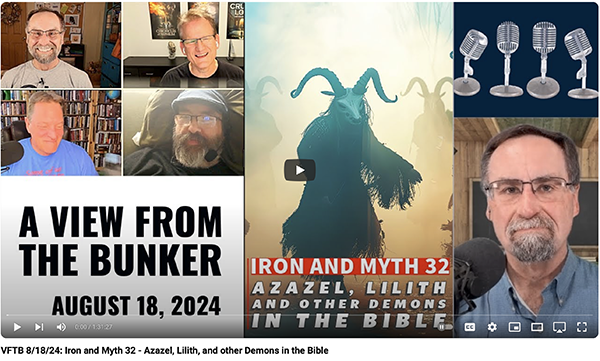One of the mysteries of the Bible is why there are no accounts of priests or prophets casting out demons. Why is that?
This is odd because the pagan neighbors of the Israelites knew about demons and had an entire library of rituals and spells for casting them out.
And in the early 1st century, Jesus and the apostles had their hands full casting demons out of people all over Judea and the Mediterranean world.
Joining us to explore the presence of demonic entities in the Old Testament and their connection to ancient pagan deities is our monthly Iron and Myth crew: Doug Van Dorn (www.douglasvandorn.com), author of Giants: Sons of the Gods, Dr. Judd Burton (www.BurtonBeyond.net), director of The Institute of Biblical Anthropology, and Brian Godawa (www.Godawa.com), best-selling author of Chronicles of the Nephilim, Chronicles of the Watchers, and the theological thriller Cruel Logic.
We discuss various passages and linguistic connections that suggest the existence of demons in the Hebrew Bible. We also delve into the significance of the desert as a place associated with chaos and demonic activity.
The conversation touches on the rituals and practices related to demons, including the naming and mocking of these entities.
We conclude with an examination of Azazel and the connection between the demonic realm and the wilderness.
The conversation explores the presence of supernatural entities in ancient texts and their connection to demonic activity.


